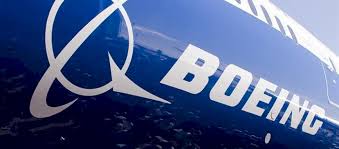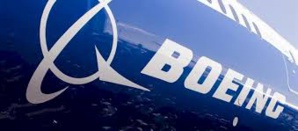No action had been taken for about a year by Boeing despite knowing about the problem with its 737 Max jets which was the cause of two fatal accidents within less than nine months, the company has admitted.
The alarm feature had been inadvertently made optional instead of standard, the company said but stressed that the decision or fault on its part would not have threatened flight safety.
Following the crash of the Ethiopian Airlines flight in which all 157 people on board were killed, all 737 Max planes were grounded in March globally. In another crash involving the same craft model, a Lion Air crash has killed 189 people about 5 months before the Ethiopian crash.
At the time of the grounding, a total of 387 737 Max aircraft worldwide had to be grounded.
The Angle of Attack (AOA) Disagree is the feature at the center of the controversy and it was designed to alert pilots when conflicting data is reported by two different sensors.
While initially planning to include the feature as standard, the company only realised that it was only available if airlines purchased an optional indicator not until the crafts were being delivered, Boeing has said. It had intended to deal with the problem in a later software update, the company said.
The software problem "did not adversely impact airplane safety or operation", Boeing however has also stressed.
It had not been informed about the software issue by Boeing until November 2018, a month after the fatal Lion Air crash, the US Federal Aviation Administration has said. While admitting the risk posed by the issue was low, the FAA however said that if the company had disclosed it earlier, it would have helped to "eliminate possible confusion".
Investigators probing the two crashes involving the 737 Max crafts have identified the flight angle of the plane to be an important factor in the accidents. The Manoeuvring Characteristics Augmentation System (MCAS), an anti-stall system which has been criticised and examined since the crashes, was fed with erroneous AOA data, in both the crashes, Boeing has said.
New software for MCAS is being developed by Boeing.
The knowledge of the flaw on board the 737 Max was with Boeing even months before the accident of the Lion Air jet off the coast of Indonesia, the company has admitted.
However, questions about how important that flaw was as a factor in the accidents is being raised and there are few who are asking whether a working "AOA Disagree" alert would actually have prevented the accidents from happening. Some experts say that it is likely.
The system, had it been present in the rafts, would have informed the pilots only about different readings being given by the two angle-of-attack sensors on the plane. And such information would have made a difference because the MCAS system, which has been identified to be the cause of the accidents, depended on data from a single sensor. A fault in that sensor may well have been the trigger for the crash.
However investigations have revealed that the existence of the MCAS system on the crafts was not known to the pilots. The system was designed to operate in the background and to enhance the handling of the aircraft.
However, Boeing insists the AOA Disagree alert was not necessary for safe flight.
Critics however would be questioning the complacency of Boeing and raise doubts about whether it was still withholding any other such information that the company has not disclosed to its customers for its other models.
(Source:www.bbc.com)
The alarm feature had been inadvertently made optional instead of standard, the company said but stressed that the decision or fault on its part would not have threatened flight safety.
Following the crash of the Ethiopian Airlines flight in which all 157 people on board were killed, all 737 Max planes were grounded in March globally. In another crash involving the same craft model, a Lion Air crash has killed 189 people about 5 months before the Ethiopian crash.
At the time of the grounding, a total of 387 737 Max aircraft worldwide had to be grounded.
The Angle of Attack (AOA) Disagree is the feature at the center of the controversy and it was designed to alert pilots when conflicting data is reported by two different sensors.
While initially planning to include the feature as standard, the company only realised that it was only available if airlines purchased an optional indicator not until the crafts were being delivered, Boeing has said. It had intended to deal with the problem in a later software update, the company said.
The software problem "did not adversely impact airplane safety or operation", Boeing however has also stressed.
It had not been informed about the software issue by Boeing until November 2018, a month after the fatal Lion Air crash, the US Federal Aviation Administration has said. While admitting the risk posed by the issue was low, the FAA however said that if the company had disclosed it earlier, it would have helped to "eliminate possible confusion".
Investigators probing the two crashes involving the 737 Max crafts have identified the flight angle of the plane to be an important factor in the accidents. The Manoeuvring Characteristics Augmentation System (MCAS), an anti-stall system which has been criticised and examined since the crashes, was fed with erroneous AOA data, in both the crashes, Boeing has said.
New software for MCAS is being developed by Boeing.
The knowledge of the flaw on board the 737 Max was with Boeing even months before the accident of the Lion Air jet off the coast of Indonesia, the company has admitted.
However, questions about how important that flaw was as a factor in the accidents is being raised and there are few who are asking whether a working "AOA Disagree" alert would actually have prevented the accidents from happening. Some experts say that it is likely.
The system, had it been present in the rafts, would have informed the pilots only about different readings being given by the two angle-of-attack sensors on the plane. And such information would have made a difference because the MCAS system, which has been identified to be the cause of the accidents, depended on data from a single sensor. A fault in that sensor may well have been the trigger for the crash.
However investigations have revealed that the existence of the MCAS system on the crafts was not known to the pilots. The system was designed to operate in the background and to enhance the handling of the aircraft.
However, Boeing insists the AOA Disagree alert was not necessary for safe flight.
Critics however would be questioning the complacency of Boeing and raise doubts about whether it was still withholding any other such information that the company has not disclosed to its customers for its other models.
(Source:www.bbc.com)






